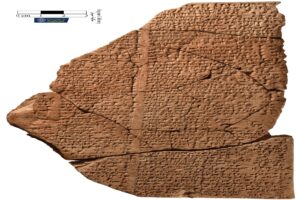The 1960 discovery of Shanidar 4, a Neanderthal skeleton surrounded by flower pollen, reshaped modern perceptions of Neanderthals.
Early research of the discovery suggested our evolutionary ancestors held funerals with floral tributes, meaning they held a spiritual view of death similar to our own.
“Although the evidence was subsequently questioned, the story was spectacular enough that it is still found in most archaeology textbooks,” Professor Chris Hunt at Liverpool John Moores University told The Guardian.
Now, new research published in the Journal of Archaeological Science is overturning the specifics of the “flower burial” hypothesis. However, it might also reinforce the underlying point that Neanderthals could have been just as empathic as modern humans.
That’s because recent excavations near the Shanidar 4 site have challenged old interpretations. Hunt’s team identified two additional Neanderthal bodies and additional remains. All were placed near a large rock, in a gully, suggesting a tradition of positioning the dead similarly over several centuries.
“What is becoming very clear is that at least three times Neanderthals came and camped on the sediments beside this gully, and placed a body into it,” Hunt observed.

An archaeologist conducts research on a human burial. Photo: Shutterstock
What do the findings mean?
Further analysis revealed multiple types of pollen in the clumps, not all from the same blooming season, casting doubt on the flower burial idea.
The team now believes that nesting bees, found close by, might be the more plausible pollen source. In addition, Hunt notes one of the flowers (the yellow star thistle) has sharp spines, raising questions about its likelihood as a funeral tribute.
Yet, tree pollen and woody fragments near the bodies hint they might have been covered with branches.
“It is very sad that we’ve demolished the flower burial story because it is a lovely story, but there’s something else going on here, which I think is in many ways just as remarkable,” Hunt said.

A wax representation of a Neanderthal at the Neanderthal Museum in Dusseldorf, Germany. Photo: Shutterstock
Rebecca Wragg Sykes from the University of Liverpool considers the pollen and woody material discovery with Shanidar Z as “convincing” evidence of bees’ role, according to The Guardian. However, Sykes also pointed to the possible intentional inclusion of plants with the deceased.
Paul Pettitt, a Neanderthal behavior expert, emphasized the original pollen sampling wasn’t exhaustive. In reality, the original “flower burial” idea was never based on strong evidence but was merely a reflection of the 1960s’ desire to humanize Neanderthals.
Nonetheless, Pettitt acknowledged Neanderthals buried their dead, at least occasionally.
“They were our human equals in other ways, and clearly buried some of their dead, some of the time,” Pettitt told The Guardian.






